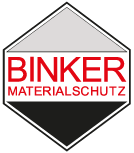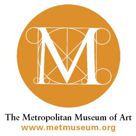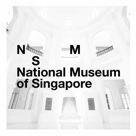Beschränkung des Verbreitungsgebietes unserer Internetwerbung - Rechtlicher Hinweis an Adressaten dieser Webseite aus dem Markt der Europäischen Union:Attention: No Offer / Service and Installation / Maintenance of Fumigation Devices with Nitrogen / Argon and Carbon dioxide within the European Union markets! Die auf dieser Webseite und/oder verlinkten Webseiten angebotenen Dienstleistungen und/oder Waren zur Schädlingsbekämpfung im Biozidbereich (nicht Vorratsschutz!) mit dem Wirkstoff Stickstoff (CAS.-Nr. 7727-37-9), Kohlendioxid und Argon (Inertgase) sind beschränkt auf Länder außerhalb des Marktes der Europäischen Union. Adressaten unserer Werbung aus dem Markt der Europäischen Union werden von uns mit den auf diesen Webseiten angebotenen Dienstleistungen und/oder Waren zur Schädlingsbekämpfung im Biozidbereich (ausgenommen Vorratsschutz) mit dem Wirkstoff Stickstoff (CAS.-Nr. 7727-37-9), Kohlendioxid und Argon (Inertgase) nicht beliefert/versorgt. Innerhalb des Marktes der Europäischen Union dürfen Dienstleistungen und/oder Waren zur Schädlingsbekämpfung mit dem Wirkstoff Stickstoff (CAS.-Nr. 7727-37-9) weder angeboten noch durchgeführt werden. Gleiches gilt für Kohlendioxid und Argon (Inertgase). Dies folgt aus der Biozid-Verordnung (EU) Nr. 528/2012 zur Bereitstellung und Verwendung von Biozidprodukten, die für unser Unternehmen bindend ist. |
For references please see:
http://www.binker.eu/london-stickstoff-begasung-zur-quarantäne-im-british-museum.html
http://www.binker.eu/teppichkäfer,-museumskäfer,-pelzkäfer-und-konsorten.html
http://www.binker.eu/mit-stickstoff-gegen-schädlinge-in-spanischen-museen.html
http://www.whatseatingyourcollection.com/reference.php?cat=treatment_chemical
Selected bibliography:
Binker G, 2001 Application of carbon dioxide for pest control of buildings and large objects. Paper In: Integrated Pest Management for Collections. Proceedings of 2001: A Pest Odyssey. London, 1-3 October, 2001. London: James and James, pp. 102- 105.
Binker G, Binker J, Froeba G and Unger W, 2002, Sulfuryl fluoride and its use as an artifact- fumigant to control the lyctus beetle. Paper In: Proceedings of the 4th International Conference on Urban Press, Virginia: Pocahontas Press, Inc 2002. (Abstract only)
Daniel, V., Hanlon, G., and S. Maekawa, 1993. Eradication of Insect Pests in Museums Using Nitrogen. WAAC Newsletter 15(3):15-19. Western Association for Art Conservation.
Gilberg, Mark, 1991,The Effects of Low Oxygen Atmospheres on Museum Pests, Studies in Conservation (36):93-98.
Hanlon, G. Daniel, V. & Ravenel, N. “Dynamic System for Nitrogen Anoxia of Large Museum Objects: A Pest Eradication Case Study”, Proceedings of the Second International Conference on Biodeterioration of Cultural Property, Oct 5-8, 1992, Yokohama, Japan.
Koestler, R.J., 1992. Practical application of nitrogen and argon fumigation procedures for insect control in museum objects. Toishi, K., Arai, H., Kenjo, T., Yamano, K. (eds.) 2nd International Conference on Biodeterioration of Cultural Property, Yokohama, Japan, 5-8 Oct 1992, preprints pp 94-96.
Koestler, R.J., 1993. Insect eradication using controlled atmospheres, and FTIR measurement for insect activity. ICOM 10th Triennial Meeting, Washington, D.C. Vol. II, 882-886.Koestler, R.J., 1996. Anoxic treatment for insect control in panel paintings and frames with argon gas. American Institute of Conservation Paintings Specialty Group, Postprints. AIC, 1717 K Street, NW, Suite 301, Washington DC 20006, 61-72.
Koestler, R.J., C. Tavzes, and F. Pohleven, 2004, A New Approach on the Conservation of Wooden Heritage, International Research Group on Wood Preservation, Paper prepared for the 35th Annual Meeting, Ljubljana, Slovenia, 6-10 June, 2004, available through IRG Secretariat, Stockholm, Sweden.
Selwitz, C. and S. Maekawa 1998. Inert Gases in the Control of Museum Insect Pests. Los Angeles: The Getty Conservation Institute.
Valentín, N. 1990. Insect eradication in museums and archives by oxygen replacement, a pilot project. ICOM Committee for Conservation 9th Triennial Meeting, Dresden, German Democratic Republic, 26-31 August 1990, Preprints, vol. 2, ed. K. Grimstad. Los Angeles: ICOM Committee for Conservation. 821-23.
Valentín, N. 1993. Comparative analysis of insect control by nitrogen, argon, and carbon dioxide in museum, archive, and herbarium collections. International Biodeterioration and Biodegradation 32:263-78.
Secondary Literature:
Biebl S., Lang U. Treatment of wood-boring beetles in oxygen-free atmospheres, OOK-Press Kft., H-8200 Veszprém, Papái ut 37/a, Hungary, 2014, Proceedings of the Eighth International Conference on Urban Pests
Biebl S., Stickstoff-Behandlung gegen Materialschädlinge, Journal für Kulturpflanzen / Eugen Ulmer KG, 2013, Nitrogen Treatment against Material Pests
Butcher-Younghans, S., Anderson, G.E. (1990): A holistic approach to museum pest management. American Association for State and Local History (AASLH) Technical Leaflet 171. Nashville, TN: AASLH,
Harmon, J. (1993): Integrated Pest Management in Museum, Library, and Archival Facilities: A Step by Step Approach for the Design, Development, Implementation, and Maintenance of an Integrated Pest Management Program. Harmon Preservation Pest Management (P.O. Box 40262, Indianapolis, IN 46240), 140 pp.
Haustein, T. (2010): Zur Diagnose und integrierten Bekämpfung Holz zerstörender Insekten unter besonderer Berücksichtigung der Buntkäfer (Coleoptera, Cleridae) als deren natürliche Gegenspieler in historischen Gebäuden, Doktorarbeit, Fraunhofer IRB Verlag, ISBN: 978-3-8167-8248-3
Parker, T. (1988): A Study on Integrated Pest Management for Libraries and Archives. Paris: UNESCO, General Information Program and UNISIST. Publication number PGI-88/W3/20. 119 pp.
Pinniger, D. (2011): New development in pest management for collections in museums and historic houses
Pinniger, D. (2010): Saving Our Heritage - Pest Management in Museums and Historic Houses, Outlooks on Pest Management 21, 239-241
Querner, P. et al. (2011): Ten years of Integrated Pest Management (IPM) at the Kunsthistorisches Museum in Wien, J. Ent. Acarol. Res. Ser. II 43, 185-190
Querner P., Morelli, M. (2010): Integrierte Schädlingsbekämpfung in Museen. Erfahrungen einer Umstellung, Restauro 116 / 4, 234-241
Querner, P., Morelli, M. (2010): Integrierte Schädlingsbekämpfung. Ein Leitfaden für eine Einführung bzw. Umstellung auf IPM, Restauro 115 / 5, 332-333
Story, K.O. (1985): Approaches to Pest Management in Museums. Suitland, MD: Conservation Analytical Laboratory, Smithsonian Institution, Out-of-print.
Tello, H., Unger, A. (2006): Pesticides: "green chemistry" finds its way into conservation science , ICOM-CC Ethnographic Conservation Newsletter
Thomson, R.S. (1995): The Effect of the Thermo-Lignum Pest Eradication Treatment on Leather and other Skin Products, Postprints of Leathercraft Group Meeting. Amsterdam: ICOM-CC 67
Wellheiser, J.G. (1992): Nonchemical Treatment Processes for Disinfection of Insects and Fungi in Library Collections. NY: K.G. Saur.



Thank you Binker Company!







